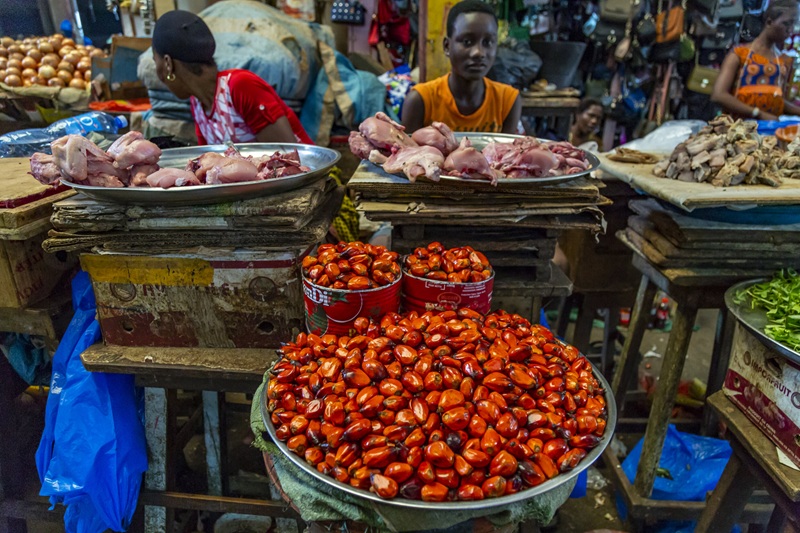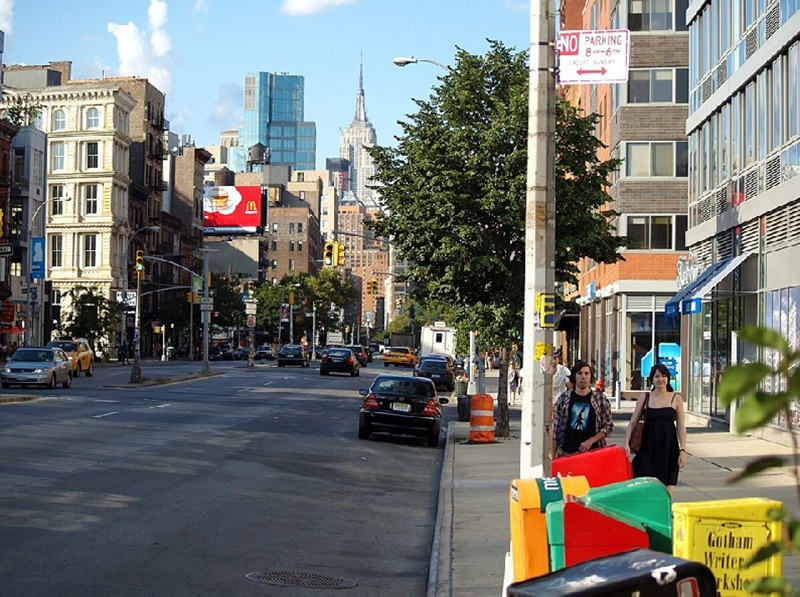
Tucked away in the vibrant neighborhood of Harlem, Manhattan, Little Senegal is a bustling cultural enclave that celebrates the heritage, traditions, and contributions of West African immigrants, particularly those from Senegal. Located primarily along Malcolm X Boulevard (also known as Lenox Avenue), Little Senegal stands as a testament to the growing African diaspora in New York City, and it offers a rich tapestry of cultural experiences, culinary delights, and a deep sense of community. Here’s a closer look at this unique part of Harlem and its significance to the city’s cultural landscape.
1. The Origins of Little Senegal
Little Senegal emerged in the early 1980s as a destination for immigrants from Senegal and other West African nations seeking better opportunities in the United States. The neighborhood became particularly concentrated around Malcolm X Boulevard due to its proximity to public transportation, affordable housing, and Harlem’s welcoming and diverse community.
While Senegalese immigrants began settling in Harlem much earlier, the creation of Little Senegal as a distinct cultural district came as part of the broader migration patterns of African and Afro-Caribbean communities in New York City. This migration was motivated by a combination of economic opportunities, educational prospects, and the city’s reputation as a haven for people of African descent, which resonated with the pride of Senegalese immigrants.
2. Cultural Influence and Community
One of the defining features of Little Senegal is its strong sense of community and cultural pride. The neighborhood has become a home away from home for many Senegalese immigrants, who have brought with them a wealth of traditions, language, and cultural practices that are on display throughout the area.
Central to this cultural identity is the use of the Wolof language, which is spoken by many Senegalese residents. As you stroll through Little Senegal, you’ll hear conversations in Wolof, French (Senegal’s official language), and English, reflecting the dynamic blend of cultures and experiences that make up the neighborhood’s fabric.
3. Senegalese Cuisine: A Taste of West Africa
One of the standout features of Little Senegal is its array of Senegalese restaurants and cafes, where locals and visitors can indulge in delicious, traditional West African dishes. The cuisine in Little Senegal is rich, flavorful, and deeply rooted in Senegalese culinary traditions.
Popular dishes include thieboudienne, a savory rice dish made with fish, vegetables, and a rich tomato sauce, which is considered Senegal’s national dish. Another beloved dish is yassa, a tangy and savory chicken or fish dish marinated in mustard, onions, and lemon, and served with rice. Visitors can also enjoy maafe, a peanut-based stew with meat, as well as attaya, a strong green tea that is a staple in Senegalese culture and often served in social settings.
Restaurants like La Savane, Senegalese Food, and Bistro Senegal are among the many eateries where you can experience authentic Senegalese flavors, and they also offer a chance to learn more about the cultural significance of food in Senegalese life.
4. Senegalese Businesses and Shops
Beyond its eateries, Little Senegal is home to a variety of Senegalese-owned businesses that cater to the needs of the local community while also introducing New Yorkers to African arts, fashion, and products. Local shops sell African textiles, traditional clothing, jewelry, and musical instruments, offering a window into the vibrant arts and crafts of Senegal.
Stores like African Market, Tassou Boutique, and Little Senegal Grocery Store are popular spots for those seeking to purchase ingredients for Senegalese cooking or to find traditional African garments like boubous (flowing robes) and dashikis. Additionally, some stores specialize in African music, offering a wide selection of ** mbalax** and sabar rhythms, which are integral to Senegal’s rich musical heritage.
5. Cultural Celebrations and Events
Little Senegal is also a lively center for cultural events, where the Senegalese community celebrates major holidays, milestones, and cultural festivals. One of the most important celebrations is Senegal’s Independence Day on April 4th, which marks the country’s independence from France in 1960. On this day, residents of Little Senegal participate in parades, street fairs, and cultural performances that showcase Senegal’s history, music, dance, and fashion.
In addition to national holidays, the neighborhood hosts various cultural and social events, such as the Harlem African Dance Festival and public music performances, where residents and visitors can enjoy live traditional drumming and dance. These events not only serve as a way to celebrate Senegalese culture but also to build solidarity among African communities in Harlem and beyond.
6. Integration into Harlem’s Broader Culture
Although Little Senegal has become a cultural epicenter for Senegalese immigrants, it is also an integral part of Harlem’s rich history and broader cultural fabric. Harlem itself is renowned for its African American heritage and artistic legacy, making it an ideal location for immigrant communities to establish themselves and thrive.
Little Senegal shares the spirit of Harlem’s Renaissance-era cultural movement, which celebrated African American identity and artistic expression. The neighborhood stands as a reminder of the deep African roots that continue to shape Harlem today, and it fosters a sense of pride and continuity for African immigrants who have made the area their home.
7. Gentrification and Change in Little Senegal
Like much of Harlem, Little Senegal has not been immune to the broader trends of gentrification. Rising property values, new developments, and an influx of younger professionals have caused some concerns about the displacement of long-standing residents and businesses.
The changes in the neighborhood have led to conversations about preserving cultural identity while navigating urban renewal. As new residents move in and more upscale establishments open their doors, some worry that the unique character of Little Senegal could be diluted. Efforts by local organizations and activists aim to maintain the area’s cultural heritage and ensure that Senegalese-owned businesses continue to thrive amidst the changes.
8. A Look Toward the Future
Despite the challenges of gentrification, Little Senegal remains a testament to the resilience and vibrancy of Senegalese immigrants in New York City. The neighborhood’s rich cultural traditions, culinary delights, and strong community bonds continue to define it as a beloved destination for both locals and tourists alike.
Looking ahead, the future of Little Senegal will depend on the balance between modernization and the preservation of cultural identity. However, one thing remains clear: the neighborhood will continue to be an important cultural hub for the Senegalese diaspora and an integral part of Harlem’s dynamic, multicultural tapestry.
Little Senegal is a neighborhood where the vibrant culture, traditions, and flavors of Senegal meet the rich history of Harlem, creating a dynamic and welcoming space for both longtime residents and newcomers. Whether it’s enjoying the tastes of Senegalese cuisine, shopping for African textiles, or celebrating cultural festivals, Little Senegal offers a unique experience that reflects the diversity and spirit of Harlem. As it continues to evolve, this neighborhood will remain an important part of New York City’s cultural mosaic, showcasing the depth and strength of the African diaspora.

